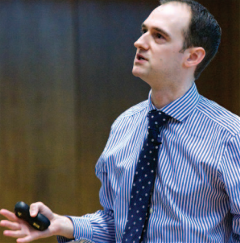Root canal treatment (RCT) can cause anxiety for young dentists. It requires careful case selection, open patient communication, recognition of clinical limitations and an understanding of when to refer. There will always be endodontic cases that cannot be successfully managed in primary care that will benefit from specialist input.
 However, early in a career, when a difficult case involves an element of supervision or assistance from a colleague, it can knock the confidence of a young dentist looking to consolidate technical skills.
However, early in a career, when a difficult case involves an element of supervision or assistance from a colleague, it can knock the confidence of a young dentist looking to consolidate technical skills.
The situation is not helped by the fact that clinical experience in RCT for younger dentists is variable, with dental schools struggling to find suitable cases for students.
Interestingly, however, more dento-legal cases arise from endodontics than any other dental procedures, and recent graduates tend to have a disproportionate share of the problems in relation to this procedure. Here is a short road map to more predictable treatment outcomes.
Step 1: Communication
Frank, open discussions with patients are important. Be honest about potential complications to avoid uncomfortable conversations post-treatment if it turns out that the restoration of the tooth is no longer possible. Be decisive at the planning stage, taking care not to be forced into treatment with a high likelihood of failure. Document those conversations in case there is a need to defend your decision.
Step 2: Clinical Comparisons
Clinical trials report endodontic successes rates in excess of 90%, but these are often very controlled studies. Are you working to the same protocols, using comparable systems, similar irrigating solutions, and for the same length of time? In reality, you are unlikely to know this until you have been practising for a number of years and have witnessed failures.
Step 3: Case Selection
Case selection is critical, with restorability an important consideration. Assess the patient carefully to ensure future patient satisfaction. Complex treatment may not be suitable for patients with a high caries rate, extensive periodontal disease or limited mouth opening.
Step 4: Clinical Assessments
Clinical and radiographic assessments of the quality and quantity of the remaining tooth tissue is fundamental. If there is doubt about a tooth’s restorability, removing deficient crowns or restorations initially can inform this judgement. At a tooth level, providing RCT may be technically possible, but care should be taken if the remaining tooth tissue is limited or compromised.
Step 5: Diagnostic Tests
Patients may present with unusual symptoms that mimic a pulpal or periapical, odontogenic diagnosis. In these cases, the diagnostic thermal, electric, and percussive tests, along with radiographic investigations, will aid diagnosis. Where diagnosis is uncertain, seek a second opinion.
Step 6: Clarity of Vision
Without clear vision, identification of complex anatomy becomes even more challenging. Magnifying loupes, with illumination, offer enormous help.
Step 7: Cavity Preparation
At the access stage, procedural errors relate to the length, depth and orientation of the access cavity. Teeth are at a greater risk of perforation if they have sclerosed pulp chambers and long, aggressive crown (>8mm) burs are used in access cavity preparation.
Step 8: Canal Caution
Caution should be exercised if instrument sequences are curtailed in the interests of cost saving or if instruments are forced into canals to overcome obstructions. Both may result in greater stresses on the instruments and lead to separation (breakage). If this happens, assess the possibility of retrieving the parts and keep the patient informed.
Step 9 Criteria for referral
When procedural errors occur, or the morphology and the lie of the tooth is unusual, there may be a need for referral to a specialist. Most NHS referral centres will have published guidelines and acceptance criteria. Make available any radiographs to aid diagnosis but, if shared on email, take care to ensure that the data is encrypted so that a third party cannot access details.
Download a PDF of this edition